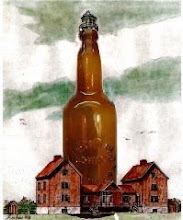•Pulverized husks can lead to tanning astringency in beer
•Intact husks will create a more free flowing grain bed (fewer stuck sparges)
•You can crush finer to increase conversion efficiency without shredding husks.
 Items you will need are a bottle for misting the malt, a scale, preferably digital (to accurately measure the water you are about to add) and a large spoon or paddle (to thoroughly mix the malt).
Items you will need are a bottle for misting the malt, a scale, preferably digital (to accurately measure the water you are about to add) and a large spoon or paddle (to thoroughly mix the malt).You will want to add 2% of the weight of the malt bill, in water, to the grain. For example, if you have a 10 pound grain bill, which is 160 ounces, multiply this by .02 (2%) and your result will be 3.2 ounces. This is the WEIGHT of water that you will want to add to your grain bill for conditioning. By doing so, you will thoroughly wet the grain husks, but you will not create a sticky mess in your rollers.
Malt conditioning is easy.  Mist the surface of the grain, and stir until you have added the calculated weight of water to your grain. When complete, allow 10 minutes for the husks to absorb this water
Mist the surface of the grain, and stir until you have added the calculated weight of water to your grain. When complete, allow 10 minutes for the husks to absorb this water
 Mist the surface of the grain, and stir until you have added the calculated weight of water to your grain. When complete, allow 10 minutes for the husks to absorb this water
Mist the surface of the grain, and stir until you have added the calculated weight of water to your grain. When complete, allow 10 minutes for the husks to absorb this waterAs you add water to the grain, it will become more difficult to stir. You may find it easier to add the water to half the malt, or a third of the malt, at a time. If by chance you notice grain sticking to your rollers after milling, you can simply run a handful of dry malt through the rollers to clean them. Also, this could be a sign that too much water may have been added to the malt. You can adjust the water proportions accordingly for your process. Feel free to experiment with 2%, 1.5%, etc,.


